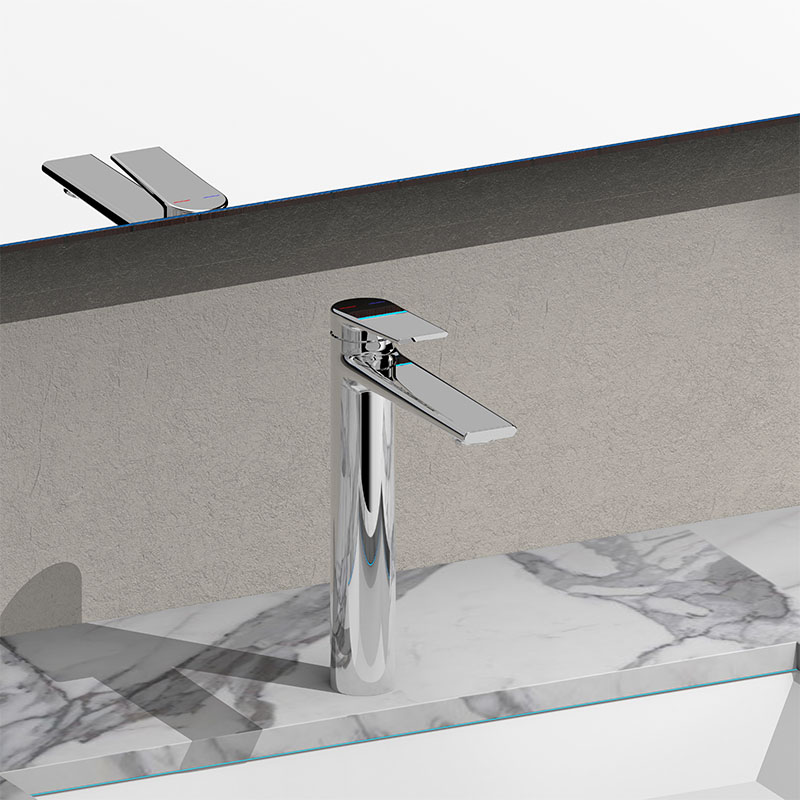Production Process Optimization Solutions in The Digital Transformation Of The Bathroom Industry
Driven by the wave of global manufacturing intelligence, the competition in the bathroom industry is shifting from large-scale production to data-driven refined operations. Digital transformation has become the core engine for enterprises to reduce costs, increase efficiency and achieve sustainable development by reconstructing production processes and optimizing resource allocation
1. Process reconstruction driven by core technologies
Industrial Internet of Things realizes full-link visualization
By embedding sensors and RFID tags in production equipment, material pallets and finished products, enterprises can collect data such as equipment operating status, work-in-progress location and environmental parameters in real time.
Digital twins enable virtual commissioning
Building digital twin models of key equipment such as kilns and spray lines can simulate the impact of process parameter adjustments in a virtual environment to avoid physical trial and error costs.
AI predictive maintenance reduces downtime risks
The machine learning model based on equipment vibration, current and temperature data can predict motor failures 72 hours in advance and automatically trigger spare parts procurement work orders.

2. Digital implementation of typical scenarios
Dynamic scheduling of flexible production lines
Intelligent order disassembly: disassemble customized bathroom cabinets into standardized panels, frames and hardware, and produce them in parallel;
AGV dynamic path planning: adjust the logistics robot route according to the real-time process progress, and the material delivery on-time rate is increased to 98%.
Intelligent upgrade of quality control
Machine vision quality inspection: use 3D vision to scan the toilet glaze, identify bubbles or cracks above 0.1mm, and the missed detection rate is less than 0.05%;
SPC real-time warning: monitor mold temperature fluctuations during the injection molding process, and automatically adjust parameters to avoid dimensional deviations.
Fine management of energy consumption and carbon emissions
Energy management platform: integrate electricity, gas and water meter data, identify energy waste in the kiln preheating stage, and reduce energy consumption by 18% after optimization;
Carbon footprint traceability system: record carbon emissions in the mining, transportation and production of raw materials through blockchain, and generate certification reports in accordance with ISO 14067.
3. Implementation path and challenge response
Phase-based promotion strategy
Primary stage: focus on equipment networking and data collection, build a workshop-level monitoring platform;
Intermediate stage: introduce AI algorithms to optimize production scheduling and quality control, and build a factory digital twin;
Advanced stage: realize data integration of upstream and downstream supply chains to form a C2M closed loop.
Organization and talent transformation
Establish a digital transformation office: led by the CIO, integrating IT, OT and production management teams;
Skill reshaping plan: conduct digital kanban operation, AGV collaborative maintenance and other training for front-line employees, and transform them into "digital craftsmen".
Ecological cooperation breaks technical bottlenecks
Join cloud service providers: use hybrid cloud architecture to balance data security and computing power requirements;
Connect with university research resources: develop dedicated algorithm models for the bathroom industry, such as a dedicated CNN network for glaze defect detection.
4. Future trends: from intelligent manufacturing to sustainable operations
5G+edge computing deepens real-time control
5G's ultra-low latency characteristics make it possible to remotely control robotic arms in real time, which is particularly suitable for unmanned transformation of dangerous processes.
Generative AI reconstructs product design
Input parameters such as "water saving" and "lightweight", and AI automatically generates faucet structure design solutions, shortening the R&D cycle from 6 months to 2 weeks.
Integration of green manufacturing and circular economy
Record product material composition through digital passports, guide scrap disassembly and material recycling, and promote the construction of "zero waste factories".
The digital transformation of the bathroom industry is by no means a simple technology stacking, but through the data flow to open up the "R&D-production-service" value chain, to achieve a double leap in efficiency and value. In the future, the core competitiveness of enterprises will depend on whether they can transform data into insights and insights into actions. In this transformation, pioneers will reshape the industry landscape, and those who wait and see may be eliminated.


